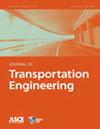Driver Maneuver Detection and Analysis Using Time Series Segmentation and Classification
Q Engineering
引用次数: 3
Abstract
The current paper implements a methodology for automatically detecting vehicle maneuvers from vehicle telemetry data under naturalistic driving settings. Previous approaches have treated vehicle maneuver detection as a classification problem, although both time series segmentation and classification are required since input telemetry data are continuous. Our objective is to develop an end-to-end pipeline for the frame-by-frame annotation of naturalistic driving studies videos into various driving events including stop and lane-keeping events, lane changes, left-right turning movements, and horizontal curve maneuvers. To address the time series segmentation problem, the study developed an energy-maximization algorithm (EMA) capable of extracting driving events of varying durations and frequencies from continuous signal data. To reduce overfitting and false alarm rates, heuristic algorithms were used to classify events with highly variable patterns such as stops and lane-keeping. To classify segmented driving events, four machine-learning models were implemented, and their accuracy and transferability were assessed over multiple data sources. The duration of events extracted by EMA was comparable to actual events, with accuracies ranging from 59.30% (left lane change) to 85.60% (lane-keeping). Additionally, the overall accuracy of the 1D-convolutional neural network model was 98.99%, followed by the long-short-term-memory model at 97.75%, then the random forest model at 97.71%, and the support vector machine model at 97.65%. These model accuracies were consistent across different data sources. The study concludes that implementing a segmentation-classification pipeline significantly improves both the accuracy of driver maneuver detection and the transferability of shallow and deep ML models across diverse datasets.基于时间序列分割和分类的驾驶员机动检测与分析
本文实现了一种在自然驾驶环境下,利用车辆遥测数据自动检测车辆机动的方法。以前的方法将车辆机动检测视为分类问题,尽管由于输入遥测数据是连续的,因此需要时间序列分割和分类。我们的目标是开发一个端到端的管道,将自然驾驶研究视频逐帧注释到各种驾驶事件中,包括停车和车道保持事件、车道变化、左右转弯运动和水平弯道机动。为了解决时间序列分割问题,该研究开发了一种能量最大化算法(EMA),能够从连续信号数据中提取不同持续时间和频率的驾驶事件。为了减少过拟合和误报率,启发式算法用于分类具有高度可变模式的事件,如停车和车道保持。为了对分段驾驶事件进行分类,实现了四种机器学习模型,并在多个数据源上评估了它们的准确性和可移植性。EMA提取的事件持续时间与实际事件相当,准确率从59.30%(左变道)到85.60%(车道保持)不等。1d -卷积神经网络模型的总体准确率为98.99%,长短期记忆模型为97.75%,随机森林模型为97.71%,支持向量机模型为97.65%。这些模型的准确性在不同的数据源中是一致的。该研究得出结论,实现分割分类管道可以显着提高驾驶员机动检测的准确性以及跨不同数据集的浅层和深层ML模型的可移植性。
本文章由计算机程序翻译,如有差异,请以英文原文为准。
求助全文
约1分钟内获得全文
求助全文
来源期刊

Journal of Transportation Engineering
工程技术-工程:土木
CiteScore
1.22
自引率
0.00%
发文量
0
审稿时长
3.6 months
期刊介绍:
Information not localized
 求助内容:
求助内容: 应助结果提醒方式:
应助结果提醒方式:


